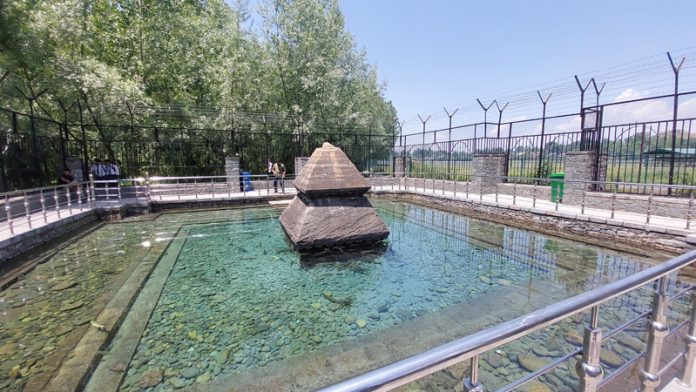The annual Shri Amarnathji Yatra is a profound spiritual journey undertaken by millions of devotees of Lord Shiva. This pilgrimage, filled with deep religious significance, could be further enriched by incorporating the ancient Shiva temple in the Manasbal area of Ganderbal district into its itinerary. Residents are advocating for this inclusion, emphasising the temple’s historical and spiritual connection to Lord Shiva. Constructed of local grey stone and featuring intricate engravings and motifs, the temple is a testament to the architectural prowess of its time. The fact that it remains partially submerged for most of the year adds to its mystique, with only its two pyramidal roofs visible during the driest seasons. Local traditions and stories passed down through generations suggest that this temple was a significant stop for Lord Shiva on his journey to the Amarnath Cave. Highlighting this historical linkage can provide pilgrims with a deeper, more enriched Shri Amarnathji yatra experience.
Currently managed by the Wullar Manasbal Development Authority, the temple is often overlooked by the broader public and remains relatively unknown to many devotees who undertake the Amarnath Yatra. Integrating this site into the official pilgrimage route can enhance the spiritual journey, allowing pilgrims to explore another layer of their faith’s rich tapestry. The local community’s call for recognition of the Manasbal temple is not merely a plea for attention but a genuine desire to share a significant piece of their heritage with the world. The Government and tourism authorities should heed this call. Moreover, incorporating the Manasbal temple into the Amarnath Yatra can stimulate local economies by increasing tourism. This could lead to job creation, improved infrastructure, and overall economic upliftment for the region, aligning with broader development goals. The relevant authorities must make appropriate decisions to ensure that this ancient site receives the recognition and reverence it rightfully deserves.
Trending Now
E-Paper


